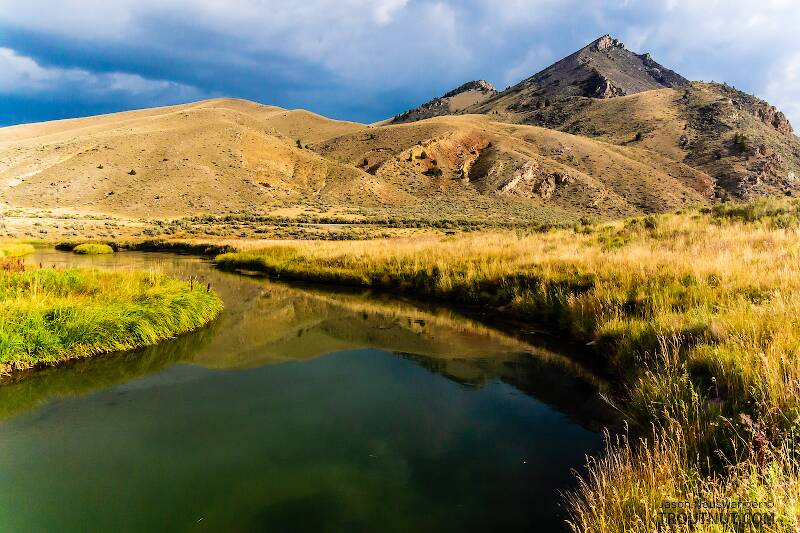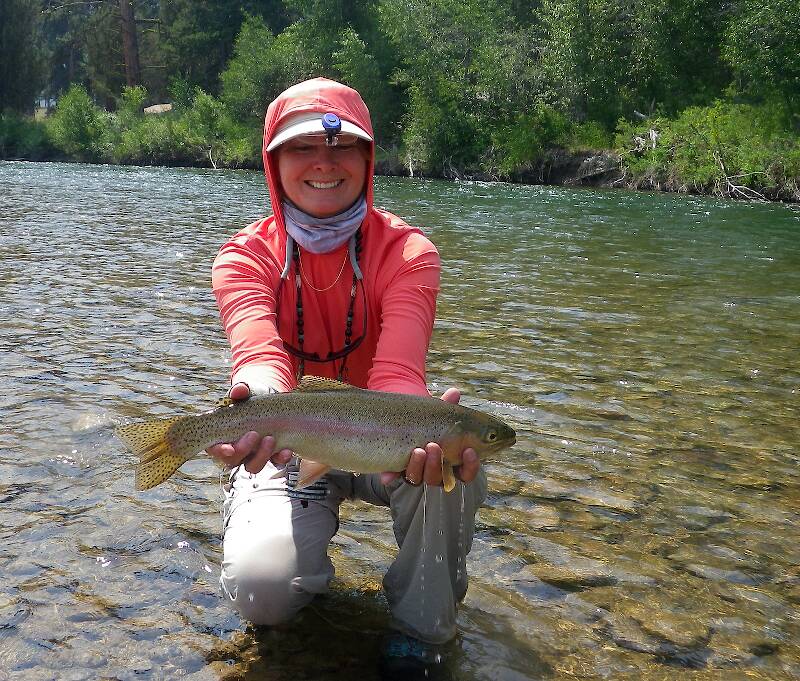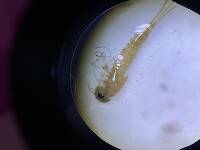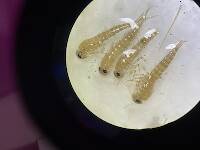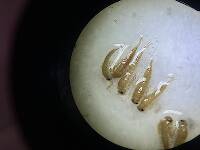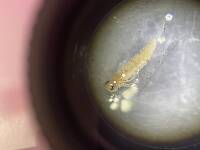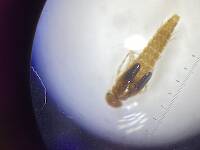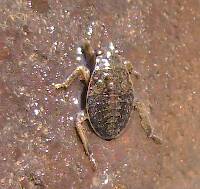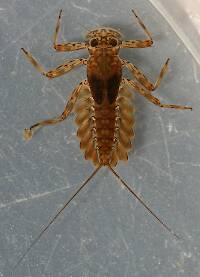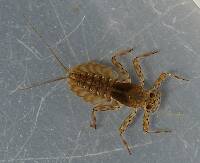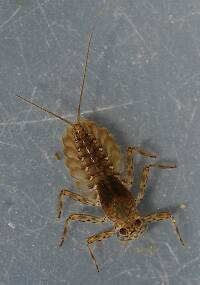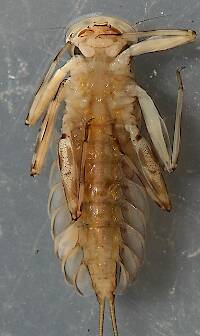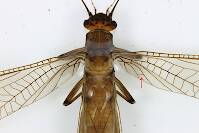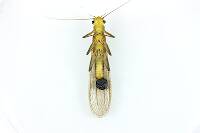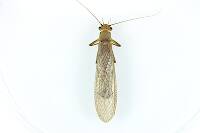
Hex Mayflies
Hexagenia limbata
The famous nocturnal Hex hatch of the Midwest (and a few other lucky locations) stirs to the surface mythically large brown trout that only touch streamers for the rest of the year.
Featured on the forum

This specimen appears to be of the same species as this one collected in the same spot two months earlier. The identification of both is tentative. This one suffered some physical damage before being photographed, too, so the colors aren't totally natural. I was mostly photographing it to test out some new camera setting idea, which worked really well for a couple of closeups.

Troutnut is a project started in 2003 by salmonid ecologist Jason "Troutnut" Neuswanger to help anglers and
fly tyers unabashedly embrace the entomological side of the sport. Learn more about Troutnut or
support the project for an enhanced experience here.
Cherylkorca has attached these 11 pictures to aid in identification. The message is below.
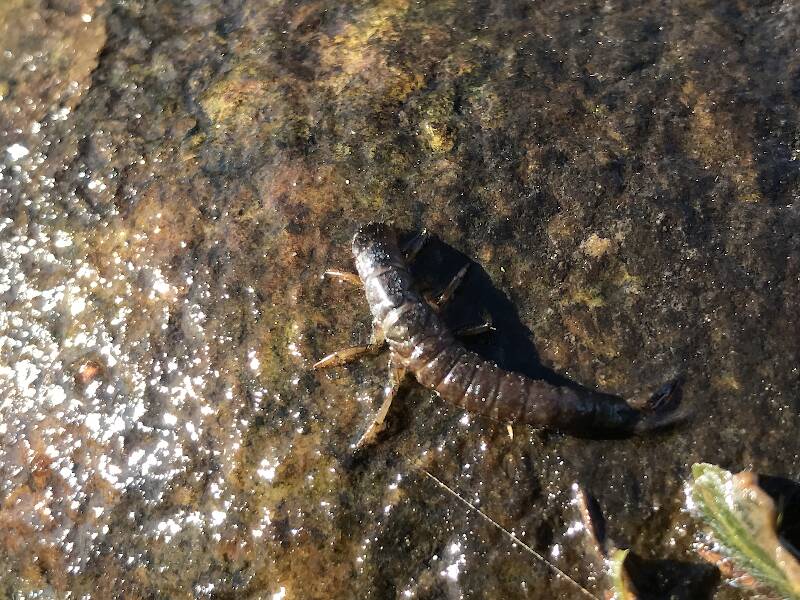
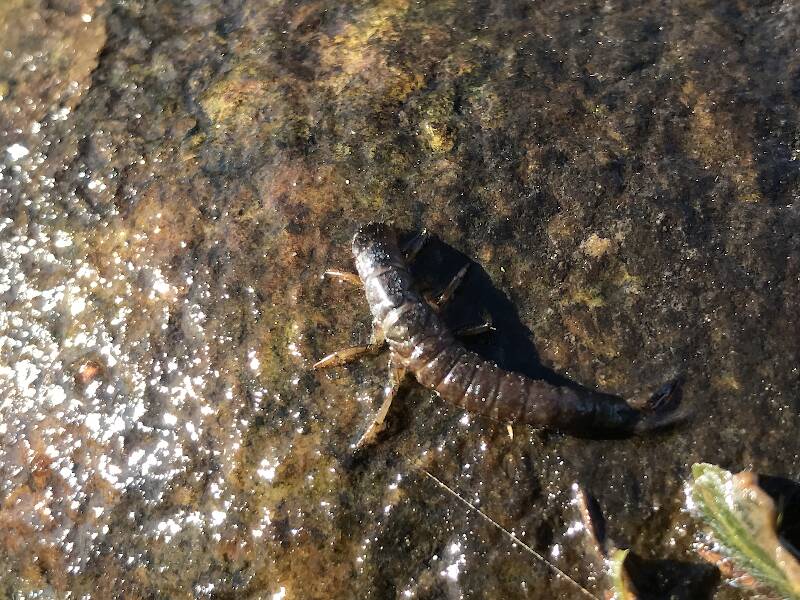
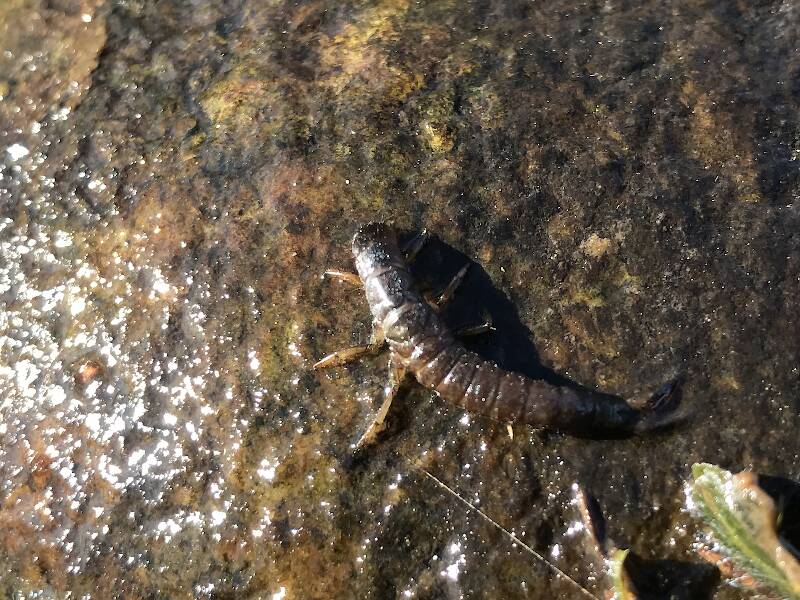
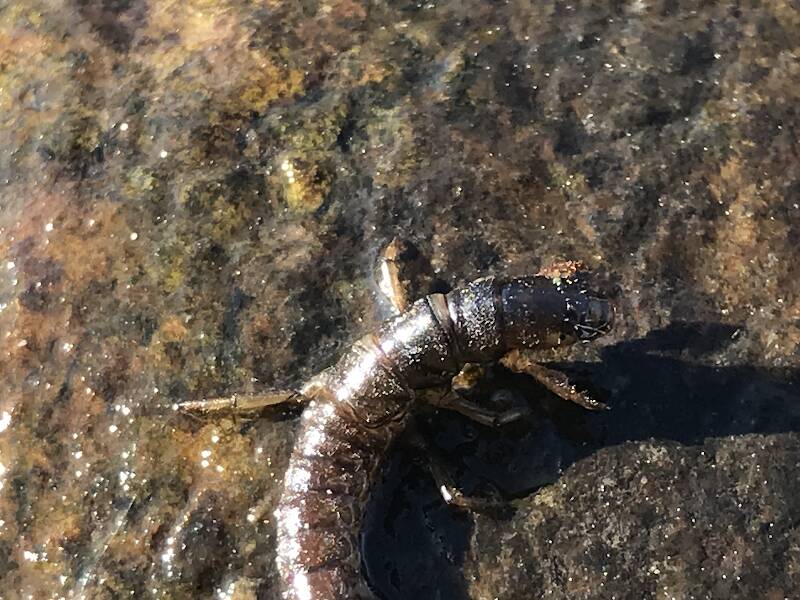
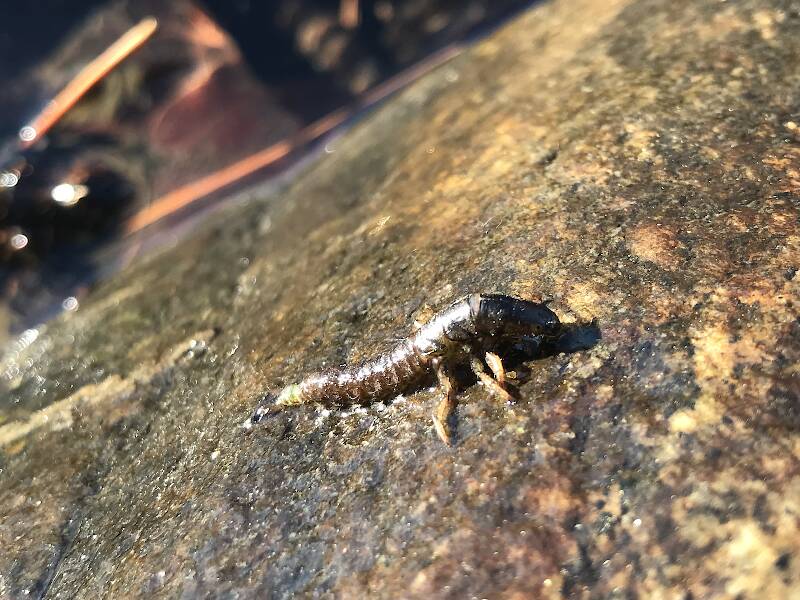
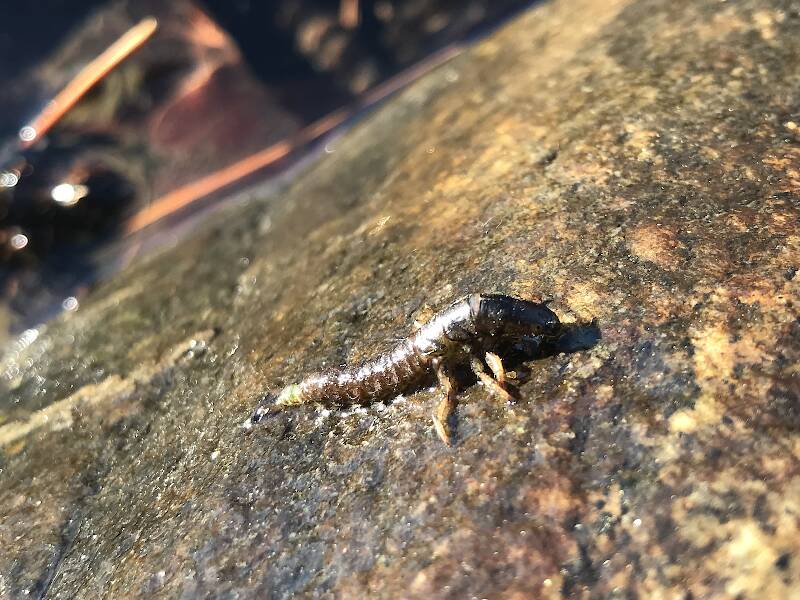
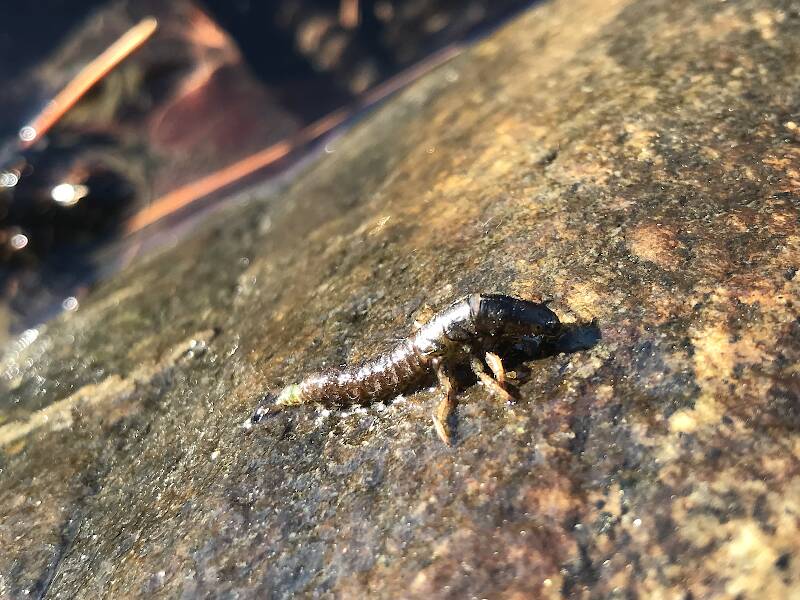
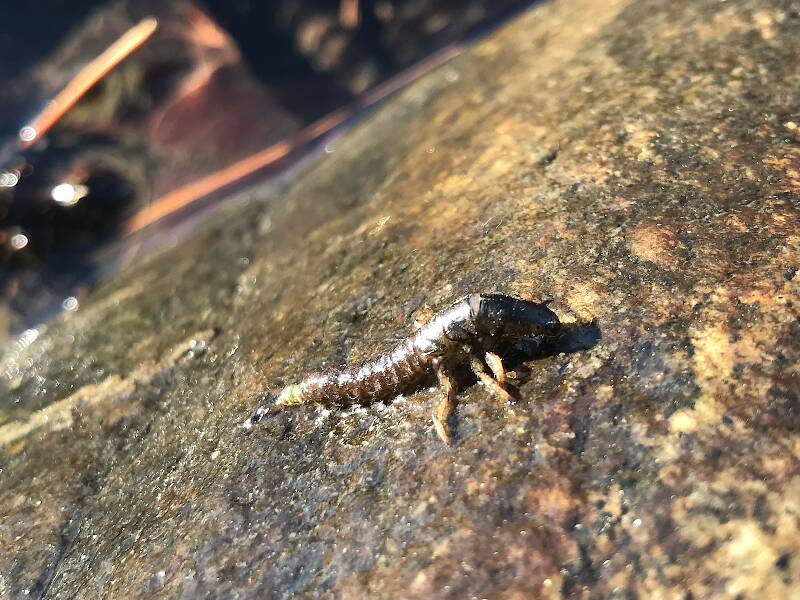
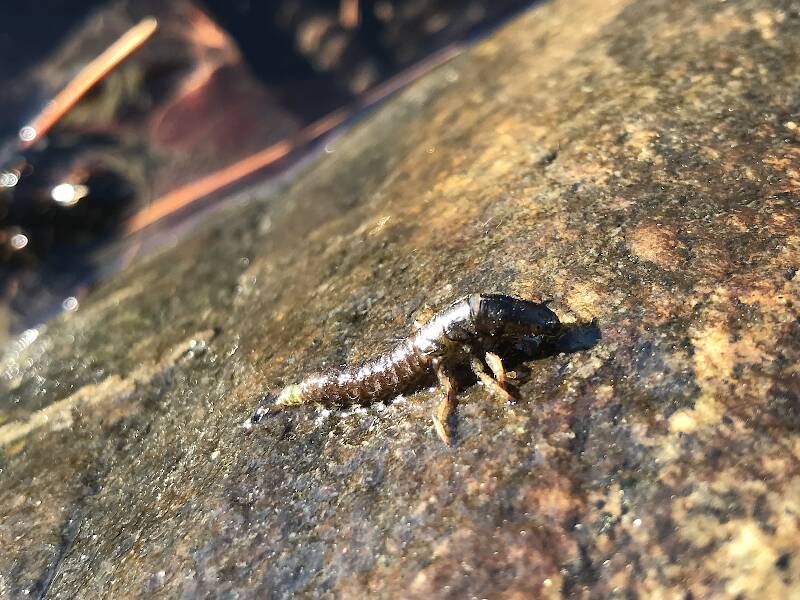
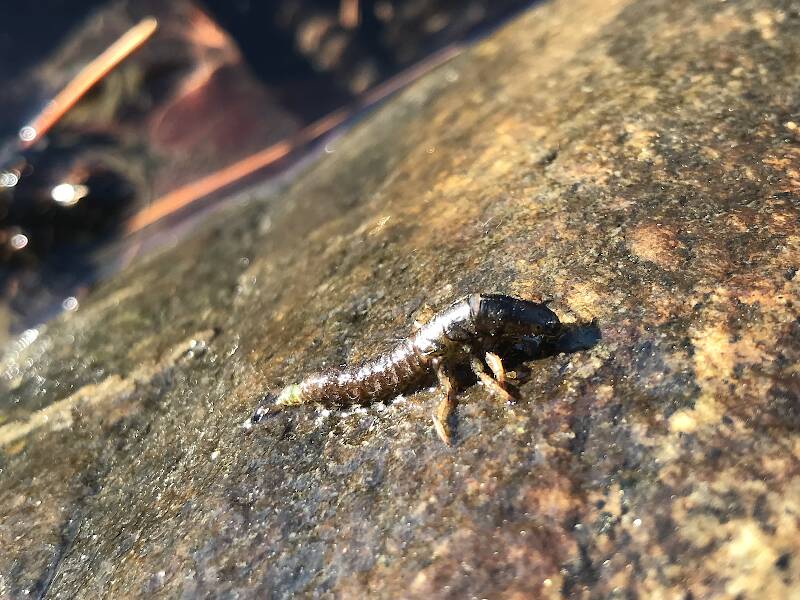
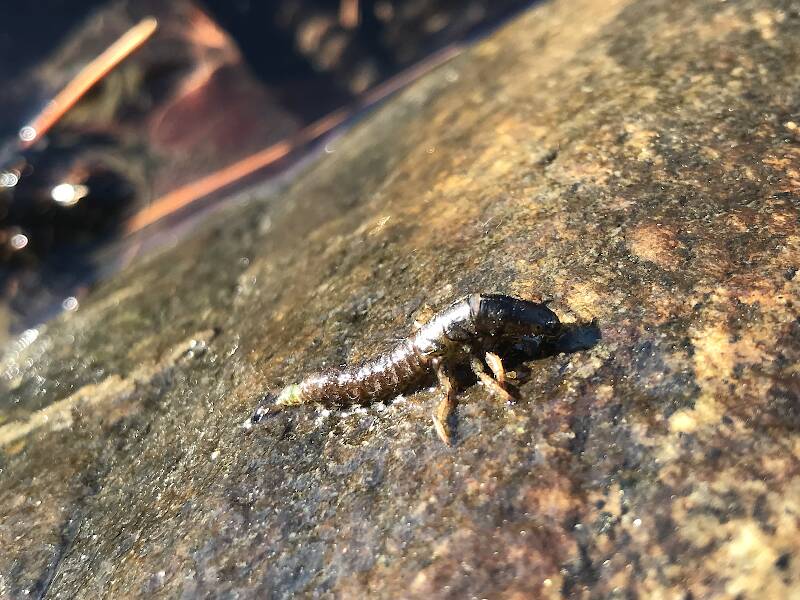
Cherylkorca on Feb 18, 2020February 18th, 2020, 4:50 pm EST
This last week I collected this larvae like Nymph and I am bit confused because i can not find anything close to this shape of bug ??? here are few images of it and thank you for your help, This guys was found in slower water under rock.
Wbranch on Feb 19, 2020February 19th, 2020, 12:13 am EST
Is there any reason you posted three images of one picture and seven images of the other picture? I guess you wanted to make sure we saw it.
Catskill fly fisher for fifty-five years.
Millcreek on Feb 19, 2020February 19th, 2020, 12:54 am EST
I think it might be a caddis, probably a member of the Hydropsychidae family. You can see what appear to be gills under the body and the filaments on the end of the body.
http://www.troutnut.com/topic/8581/Hydropsyche-larvae-and-pupae-californica
http://www.troutnut.com/topic/8581/Hydropsyche-larvae-and-pupae-californica
"If we knew what it was we were doing, it would not be called research, would it?"
-Albert Einstein
-Albert Einstein
Creno on Feb 19, 2020February 19th, 2020, 4:33 am EST
You are correct that it is a hydropsychid. And I would go with one of the Hydropsyche species.
Leskorcala
Posts: 16
Posts: 16
Leskorcala on Feb 20, 2020February 20th, 2020, 2:11 pm EST
Thank you both for your help , I did collect few more today and they were in their tubular like gravel?sand cases , so its Caddis larvae for sure
Leskorcala
Posts: 16
Posts: 16
Leskorcala on Feb 20, 2020February 20th, 2020, 2:16 pm EST
No , no reason sir , just mistake on my part , compute was not loading and when did it load all
Quick Reply
Related Discussions
Topic
Replies
Last Reply
Re: Identification of a possible Cordulegaster Dragonfly Nymph
In Cordulegaster Dragonfly Nymph by IanB
In Cordulegaster Dragonfly Nymph by IanB
6
Feb 10, 2017
by Taxon
by Taxon
6
Mar 27, 2011
by Doublea176
by Doublea176
9
Jun 17, 2015
by Oldredbarn
by Oldredbarn

